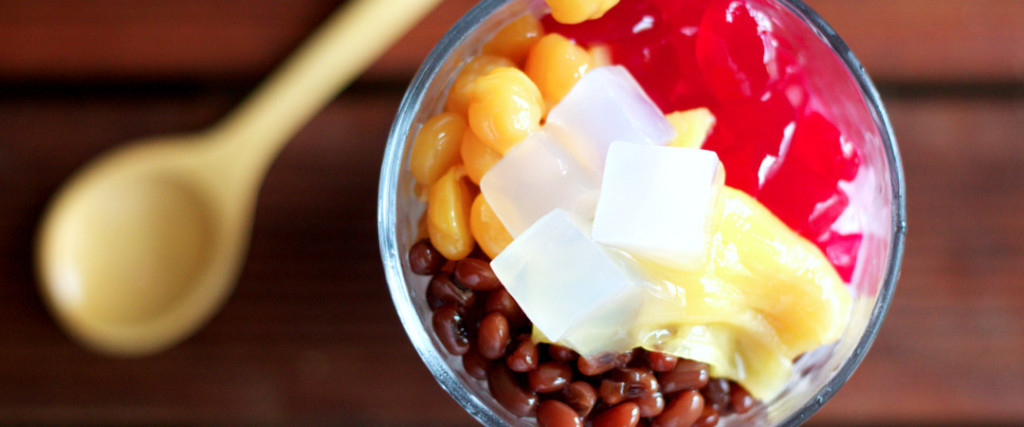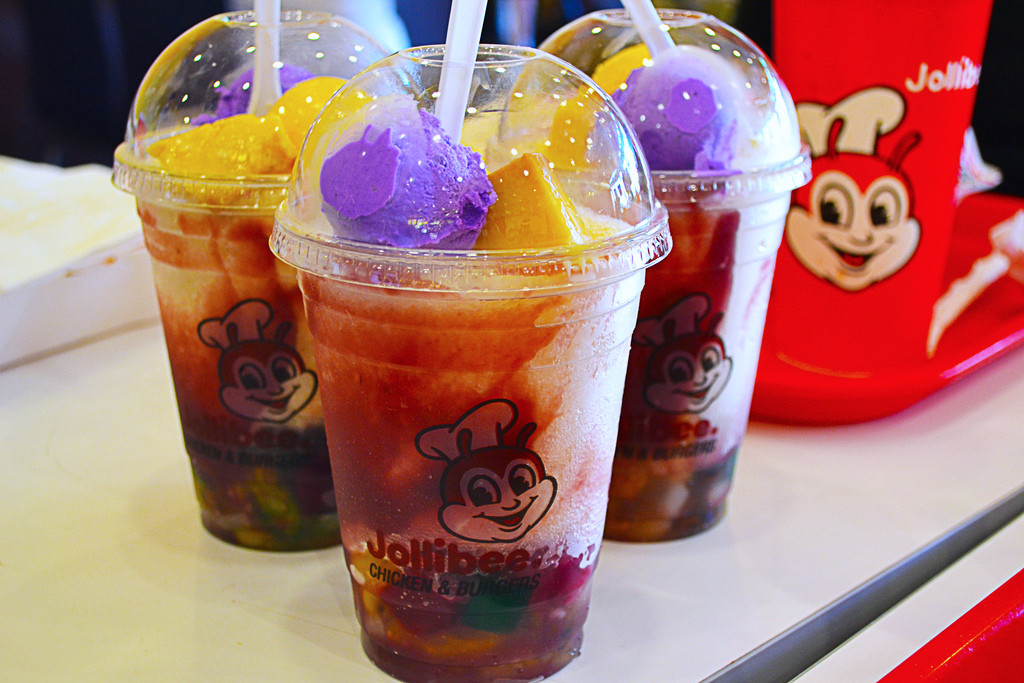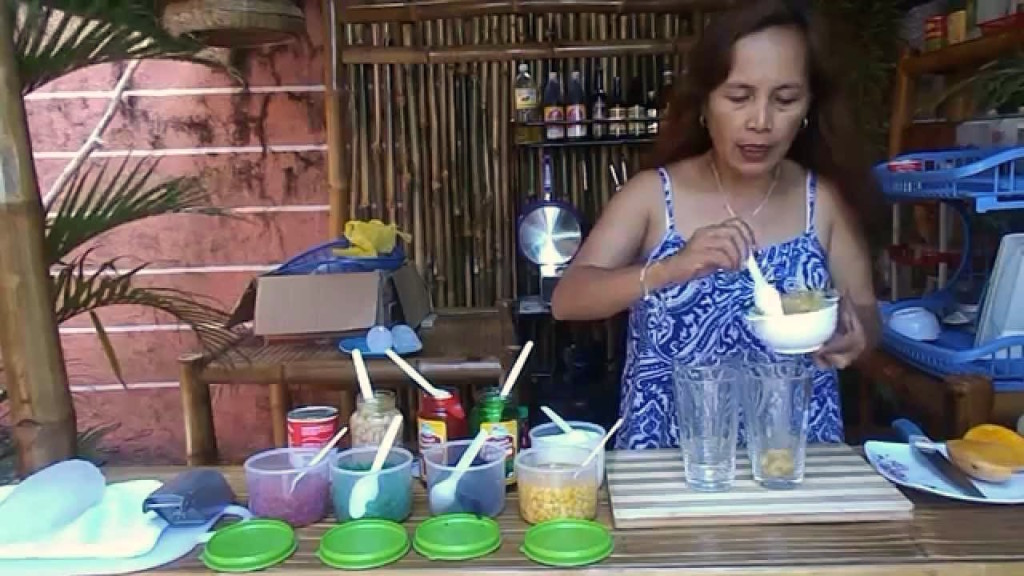Halo-halo is almost as interesting to taste as it is to look at. A collage of textures and colors ranging from green to purple to red tempt you to take a bite, but once you notice the adzuki beans you might have second guesses about what you’re going to eat.
The word halo-halo means “mix-mix,” which is exactly what this dessert is: an assemblage of shaved ice, condensed milk, ube (purple yam), pinipig (toasted rice), leche flan, Jell-O cubes, caramelized plantains, gummies, adzuki beans, and sometimes, corn. The exact ingredients depend on where you’re buying from, but the idea is always the same. It’s light, it’s refreshing, and every bite is unique.

Photo courtesy of justeatlife.com
It might not be able to compete with the excessive Black Tap milkshakes, but halo-halo is a dessert that stands on its own. The frozen treat came from humble beginnings, evolving into the refreshment of choice for those looking to ward off the Filipino summer heat. It’s even permeated the fast food market, which attracted attention with Anthony Bourdain’s visit to Jollibee in Los Angeles. “It makes no goddamn sense at all; I love it,” he said. That seems to be the general opinion towards halo-halo. I wanted to see what this dessert was all about, so I headed to Real Sarap, my local Filipino restaurant, to get my hands on one.

Photo courtesy of balaupc77 on flickr.com
The couple sitting behind me also ordered one, and I heard them quizzically attempting to identify each layer. I wasn’t sure what the proper approach was to eating such an intricate layering of flavors – do I pick at them separately or do I mix it all together and hope for the best? I decided to try both strategies.
The first spoonful tasted like a sweet, Spanish-inspired snow cone: thick chunks of leche flan and ice infused with creamy condensed milk. After plucking out a satisfying amount of flan I decided to mix the rest together. Juice from red gummies diffused through the shake to give the whole thing a subtle strawberry taste. Excavating the bottom layer with a long plastic spoon was like blindly digging through a magician’s bag; I had no idea what new ingredient I was about to pull up, and the variation seemed endless.

Mouthfuls of squishy sweet plantains, chewy corn, and flavorless Jell-O made for an – ehem – interesting experience. It grows on you, though, and the more you eat the better it tastes. This odd concoction might not seem to make any culinary sense, but halo-halo is characteristically Filipino; it reflects the country’s past and its variation of cultural influences.
Flan and condensed milk are obvious traces of the Spanish, whose colonial impact remained on the islands after they were ceded from Spain to America in 1898. Even ice was an import; it wasn’t reliably accessible in the Philippines until the beginning of the 19th century when the US introduced an ice plant to Manila.

Photo courtesy of myrareyes on youtube.com
The essence of halo-halo comes from a Japanese dessert called kakigori, shaved ice with adzuki beans and sugar, which was brought to the Philippines with Japanese settlers during World War II. It’s surprisingly common to feature red beans and corn in Asian desserts, like ABC (Air Batu Campur), a popular dish in Malaysia and Singapore. An early form of halo-halo called mongo-ya was so popular among Japanese immigrants that it gave enterprising Filipino farmers an opportunity to make a living from selling the treats.
Halo-halo remains the Philippines’ number one dessert in the summer, and can be found anywhere from street carts to upscale restaurants. With a recent surge of Filipino food in the United States, even more variations are popping up. Most commonly, pinipig is replaced with favorite cereals like frosted flakes and captain crunch. The recipe is open to interpretation, which gives vendors creative freedom to add their own special twist, and reflects the Philippines’ unique ability to take on cultural influences while retaining its traditional roots.


